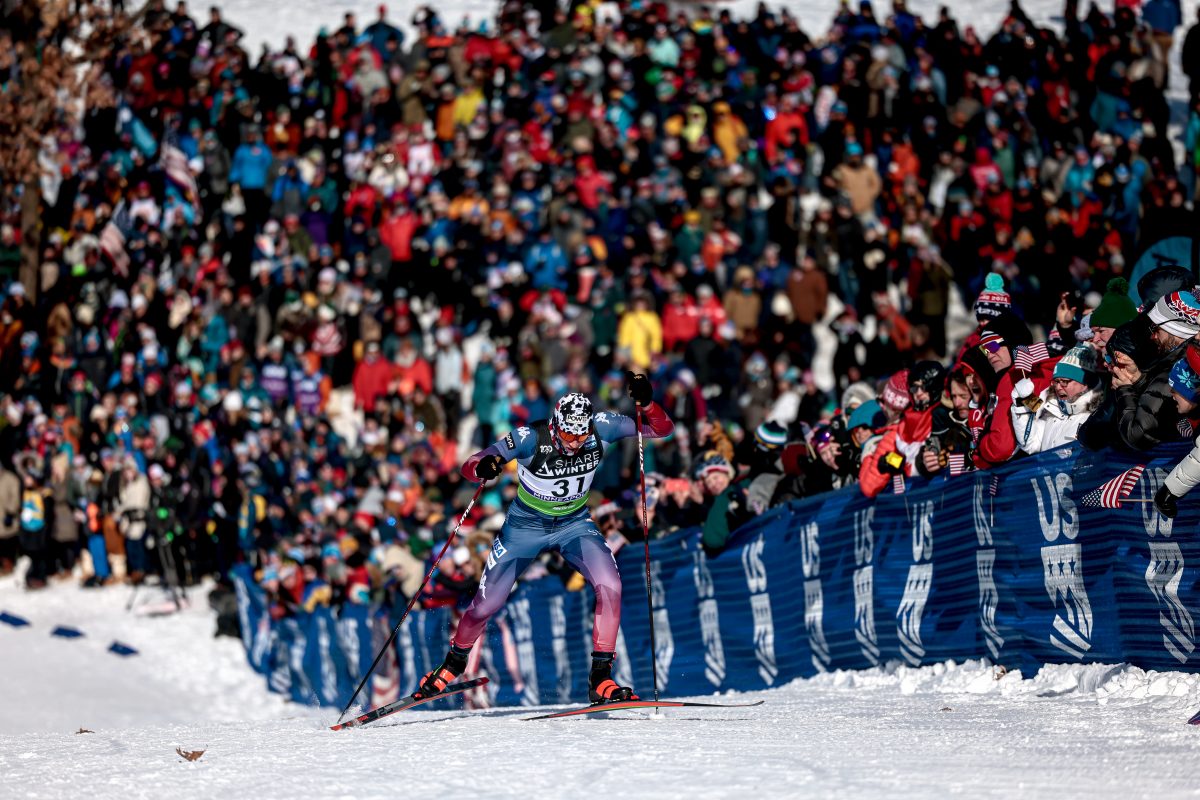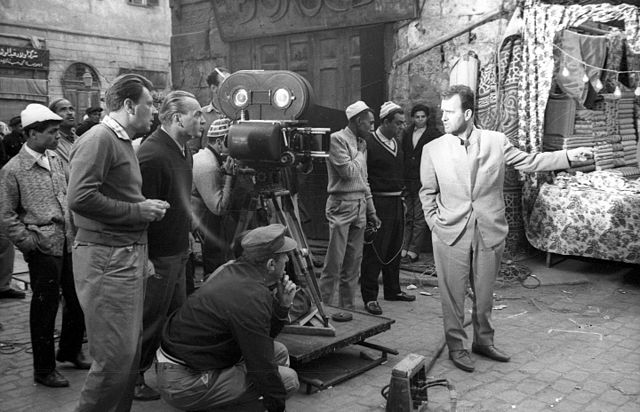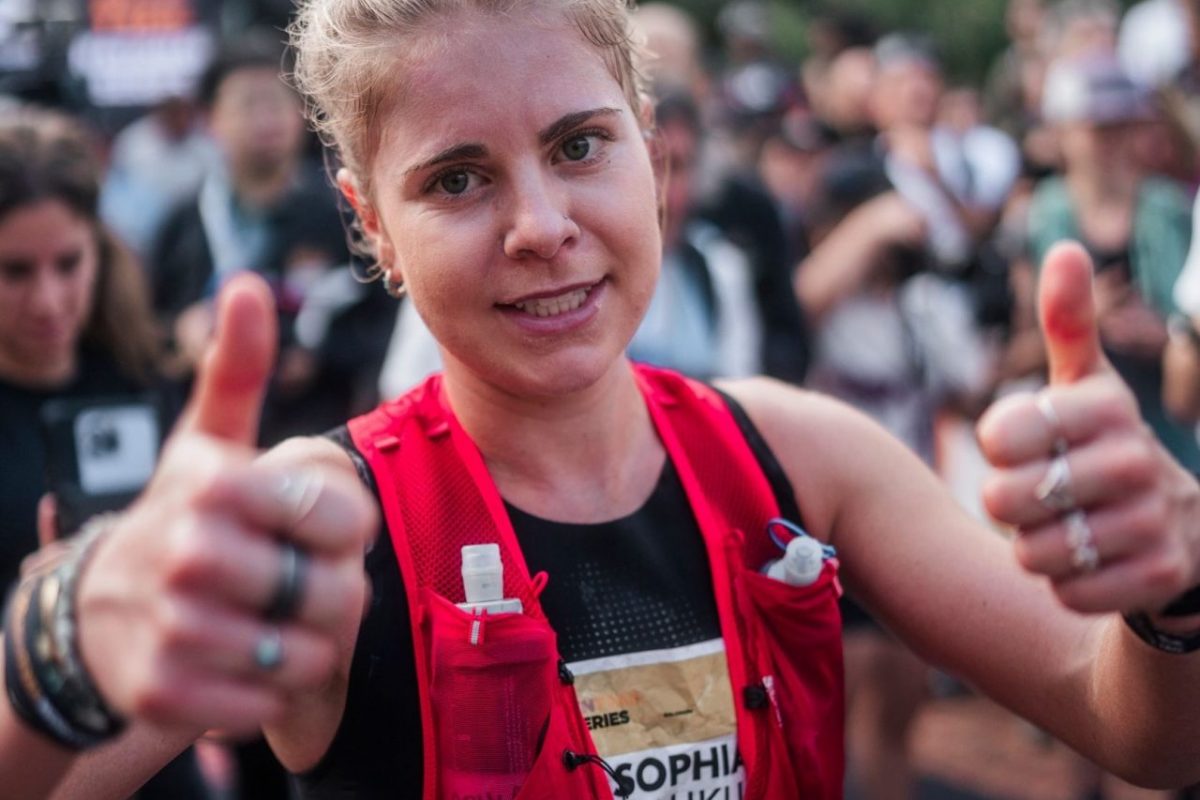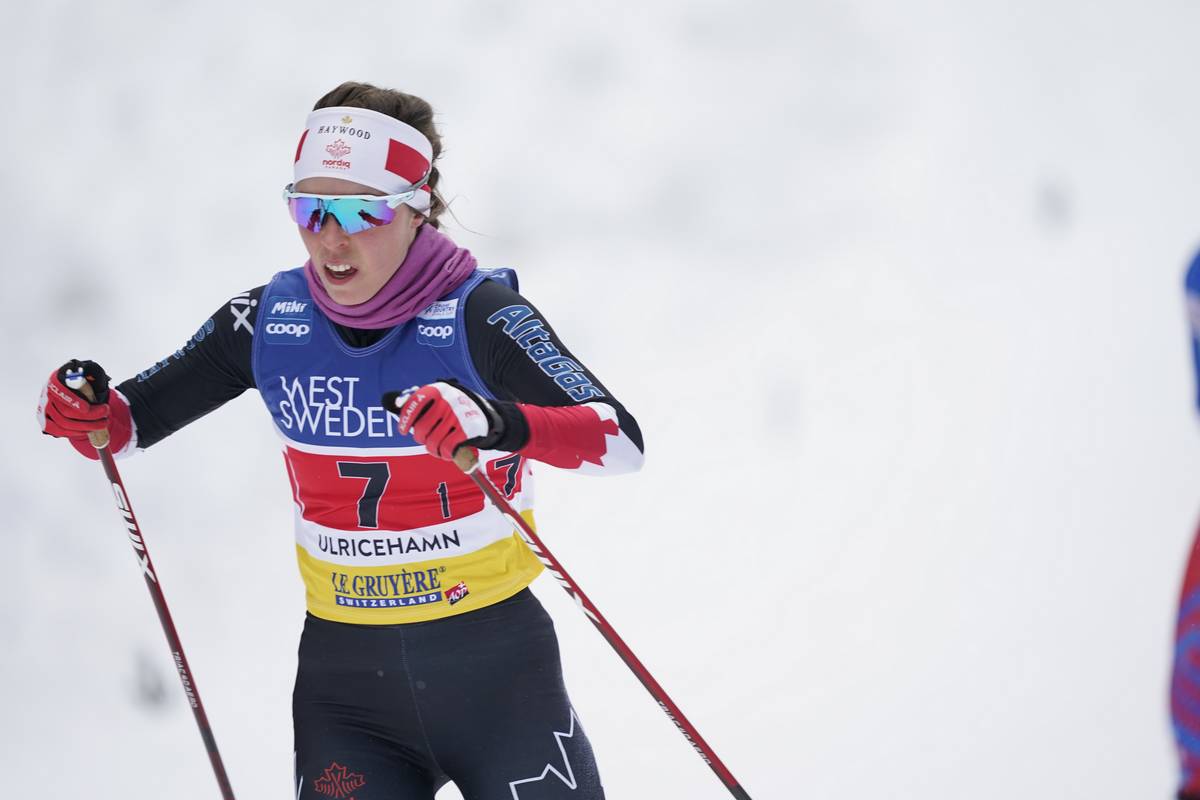
Canada’s Katherine Stewart-Jones landed on the World Cup this season beginning in January – and late January at that. The Canadian National Team remained off the race circuit until then due to a variety of issues related to the pandemic. Domestically, Canada took a hard stance on running races. When Stewart-Jones and her teammates raced in Lahti on January 23, their only “race” experience since the end of last season were head-to-head efforts within a respective athlete’s bubble or comparable, yet solo effort, time trials.
Talk about being thrown into the shark tank.
Before this season, Stewart-Jones’ lone top-30 on the World Cup was a 29th overall place in the Ski Tour 2020 which she achieved by placing 29th on the Ski Tour’s final stage, a 15-kilometer classic pursuit.
Last year, Stewart-Jones was not initially named to the National Team – she was named to the team at a later date after she appealed the decision. With the cancelation of the North American World Cups in March 2020, it was perhaps a missed opportunity for the skier to highlight her fitness close to home – which for the time being is Canmore, Alberta.
Since joining the World Cup in 2021, Stewart-Jones has contested five individual races. She has earned points (a top-30) in three of those five events. There was a 24th in her first race this season, a World Cup no less, in the 15 k skiathlon in Lahti. She placed 17th – a career-best – in Falun, Sweden’s 10 k classic mass start, and 30th in Falun’s classic sprint (she qualified in 29th).
As Stewart-Jones stated in the interview that follows, she has always been thought of as a motor. She could fly along the course despite what some would consider less than ideal technique. As she refined that motor, she suffered a serious concussion in 2017 – but she stuck with the goal of becoming her best self on the racecourse.
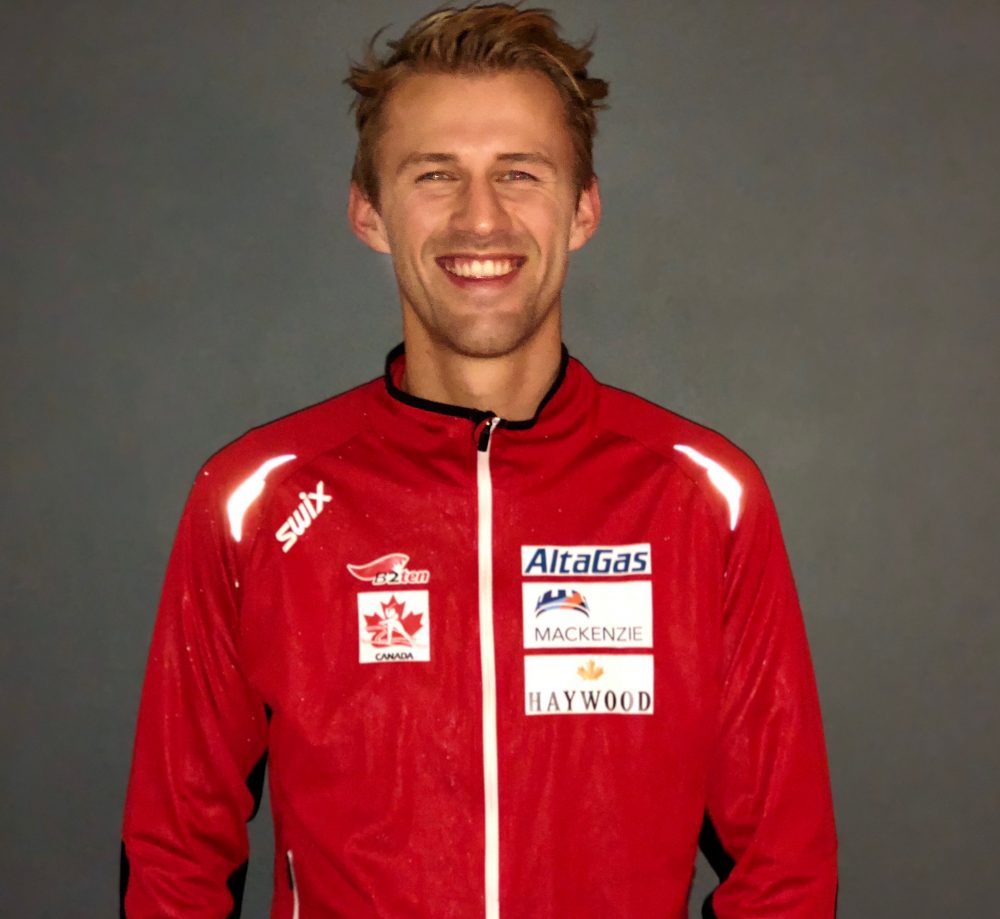
A year after her concussion, Norway’s Erik Bråten arrived to help coach the National Team. Now in his third season as National Team coach, the athletes collaborating with him have been able to realize some of their goals. One main goal for Stewart-Jones, refined technique.
Devon Kershaw, a keen-eyed observer of the sport, brought it to our attention in his podcast. He noticed subtle changes in Stewart-Jones’ skiing that warranted a conversation with the skier and coach. We spoke to them on a joint call on February 4, to discuss their two-way-street athlete-coach relationship.
But let’s be clear, I want to underline that Katherine’s progress is her own doing. I for sure think that my input set up the framework for a beneficial process, but this is mostly all her. She has taken cues, tried everything I have given her, come back with feedback on what worked and what did not. Like Devon said in the podcast a few days ago, without the athlete a coach is just a weird person yelling at the ski track and treadmill – Erik Bråten
Below are video clips provided by Stewart-Jones to cross-reference technique modifications in double poling, offset (V1), and one skate (V2).
Double poling
Offset (V1)
One skate (V2)
***
This interview has been edited slightly for clarity.
FasterSkier: The Canadians came over for the World Cup this season beginning after the Tour de Ski. Considering the pandemic, what were some of the challenges preparing for the World Cup this season? But also, what maybe were some upsides? Let’s face it, you folks have hit the ground running with several notable results. So maybe there is a big upside to the late arrival.
Katherine Stewart-Jones: It is difficult when you haven’t raced people for such a long time. I mean I’ve raced teammates but that’s different. It was difficult to miss the early-season World Cups during Period I. But at the same time, we had what we had. I think it was a good opportunity to put in extra training hours and take advantage of that so we were prepared for January when we were racing on the circuit.
I’ve found that for me if I’m racing consistently throughout December, it’s harder to put in training and build up that volume. And also, as an upside, I spent a lot of time on snow here in Canada. We had snow at the end of October here in Canmore. So, that was good too and I felt lucky especially looking at some places in the U.S. that had zero snow and some racers weren’t on-snow until they were racing World Cups. So, at least we had that on our side.
As far as the World Cups, I think it’s more of a mental thing going into those races blindly- it’s scary because I’m pacing off my teammates during some training sessions and we are all trusting that we are fast enough. I’m just trusting the process and going for it.
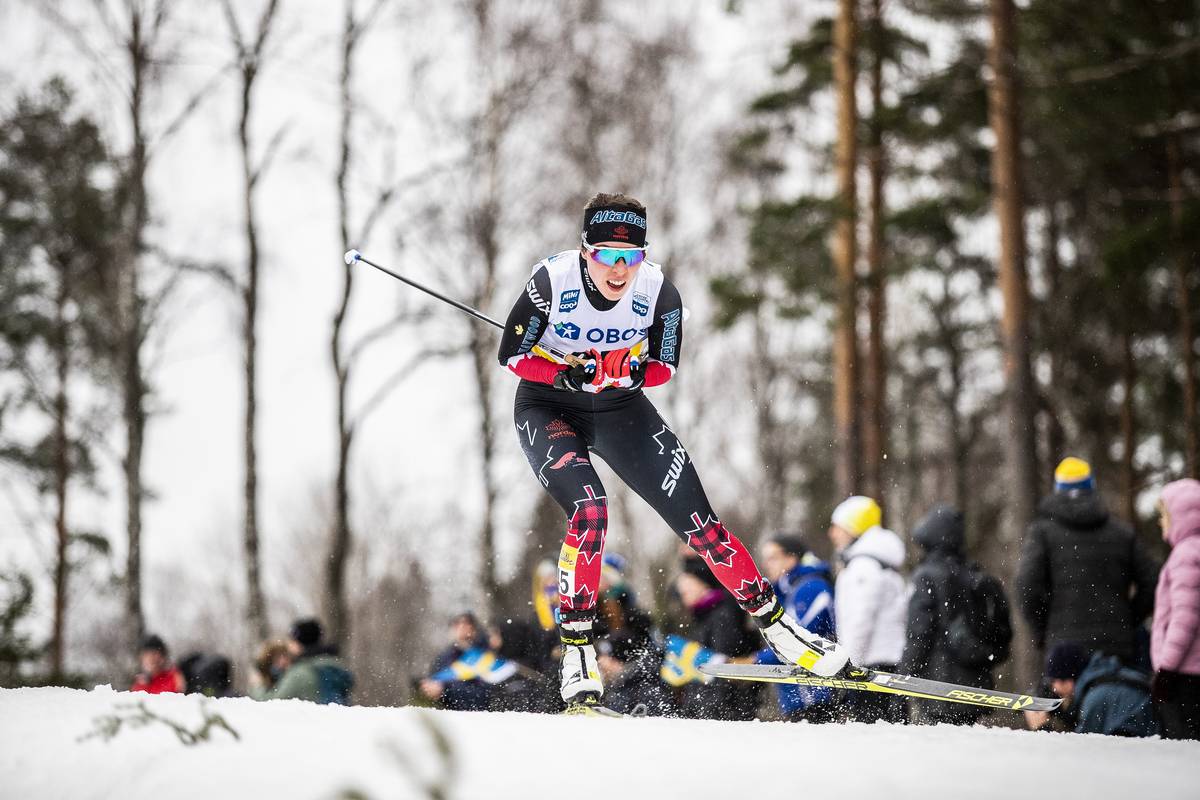
FasterSkier: Are you someone that from afar is glued to the results from each weekend and you are finding a way to watch those races? Or are you simply flipping through social media and observing and recognizing how things are/were looking without the Finns and the Norwegians and Swedes… how much attention are you paying to it and how fast people are racing?
KSJ: I love watching the World Cup, so I pretty much wake up every morning they are held, and before looking at the results, I’ll watch it on YouTube. I’ll take screenshots of the videos and then compare their technique to my own.
FasterSkier: Erik, you are from Norway, a pressure cooker when it comes to cross-country skiing. Now you are in a slightly different scene in Canada and establishing your own team culture. What were your thoughts about the positive sides to not being on the World Cup for the initial periods of racing, realizing now since arriving in Europe, that maybe this is playing out okay?
Erik Bråten: It is tricky because there is a delicate balance between what is safe, what is smart, and what is ethically right and all these perspectives in top sports when it comes to competing this year and thinking there is a chance to race out there we should grab it. It is an ever-evolving kind of process to be a part of and you can even find yourself conflicted all day. I think it is quite energy-consuming for everyone involved. I think a good thing for athletes and certainly myself, I am not the one making the decisions in the end, even though I have my voice in there, is that you can be disappointed but you have to roll with whatever is decided.
It comes to a place where I think the best athletes are quite good at adapting. They might be super disappointed or angry, or happy or whatever for a very short amount of time, but they adapt quite fast. A bad day or two and they are like, ‘OK this is what I have this is what I can work with, let’s make a plan.’
We had good skiing from early on, like Katherine said, for her living in Canmore like me, we had good skiing from the 19th of October. And we were able to go with our plan. I think everyone else had to adapt to not going over to Europe, thinking about test results possibly being bad over there, travel over to Europe, certain hotels not working out, food issues.
We have been able to go through with our planned training on snow continuously for months. We rarely do that. So I think our base that has been built is a strength that hopefully … well it has already shown and should show even more in the weeks to come. But I think of course as Katherine said, the obvious downfall is that you need to race fast.
That is why I think some of the team, including Katherine and a couple of others, are extremely impressive because I was expecting it to take two weeks before really seeing what they are capable of. They just jumped straight into good results. So that is super fun.
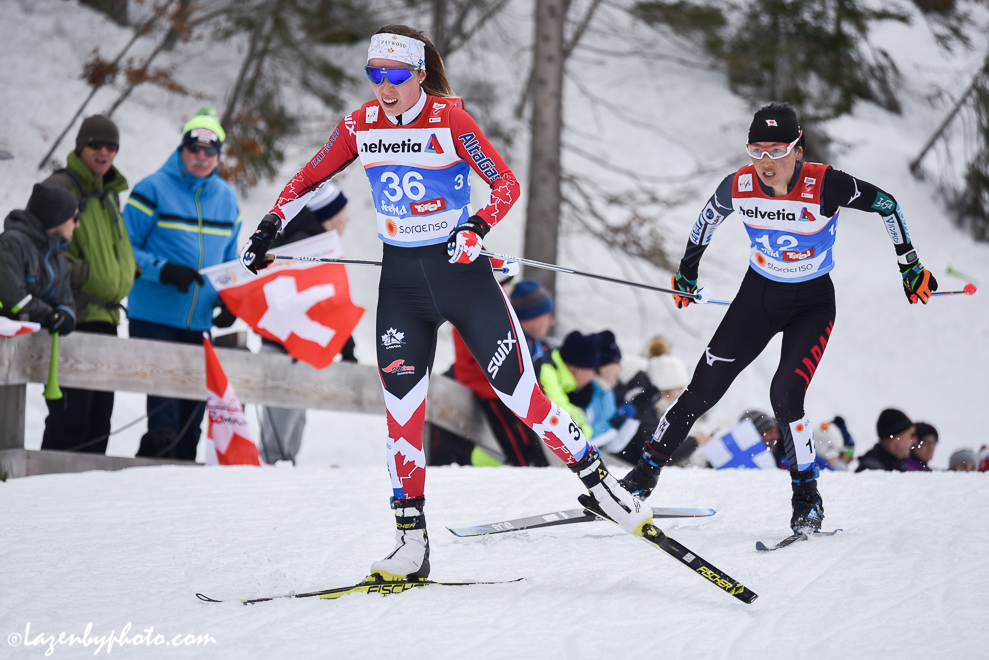
FasterSkier: Specifically in terms of Katherine’s skiing, some folks keen on analyzing the sport are commenting on her improved technique. Erik, this is your third season with the team. When you first observed Katherine’s skiing what were you seeing and what did you think some of the biggest challenges would be in terms of improving her technique?
EB: It was a process where I came into the first season, it was winter, that is the correct point, I first came meeting a big part of the team back then on a race day. It was straight into race season. Even after I had a full winter here and could observe, I had nothing to do with the training process that first winter. And I just tried to be as a good a coach as possible on the scene without having too much depth when it came to the process leading up to it.
I observed Katherine for the first winter, before I actually started a full season with her. And Katherine was fit, she was relatively strong, she was hard-working, She had all these things and that doesn’t mean she was good enough on all these things, but one thing that I thought was a limiting factor in her performance was technique.
I thought she wasn’t getting her entire amount of potential energy out on the course and into speed. She was leaking energy as I like to say and it was not going in the right direction.
That was something ,when I started coaching her personally after half a year, the Spring of 2019, we sat down and I explained my perspective on what she could do to take the next step results wise.
For me it was several things, the baseline started with Katherine’s posture which was not ideal in my opinion, there was a bit of an arch and a couple of other things and we took it back to the basics. I took her off the skis as she could not really handle the movements I was asking her to do. And so until she was able to do that without skis, I think, it is unfair to put her on skinny skis at 30 k an hour and ask her to do it.
So we took it all the way back and connected with a great physio in Calgary. I was present at about one-third of the sessions because it was an interesting process for me as well. The physio also asked me about what kind of movements do I want to see in Katherine. We had a great system set up and she began to move differently. Her body was much more in control and she could do the movements without skis, then we were ready for me to bring my eye and knowledge to her movements on skis.
Again, it is unfair to ask her to not arch on skis if she is arching when she is standing on two legs and fully balanced. That is not going to happen when she is exhausted on one leg at a time on skinny skis.
FasterSkier: Katherine, what was your perception about what you needed to work on?
KSJ: I’ve always been the girl with the engine and not really the best technique. So, I think that it’s been something that’s been difficult for me and difficult in every sport I’ve done. I’m not the best soccer player, my ball-handling skills were never any good – I just have a hard time with that type of thing.
And I’ve worked with coaches in the past but it’s been really hard for me to make any improvement because, like I said, I’m missing those basic movement patterns and it’s years and years of bad habits that have built up.
So if someone tells me to do something technique-wise, I can’t even do it because I don’t even know how to do it when I’m not on my skis. It’s been really difficult for me to change anything about my skiing.
So since I’ve been working with Erik, he made it clear that it was possible to change. That was already huge — just having someone that dedicated to getting me better and more efficient. That’s why we went through the process and technique modifications for me to be more efficient. We started to work with a physio in Calgary and she’s incredible to work with and she completely changed my view on how movement works. Even just my day to day posture because I’m someone who has an arched back, generally. So, learning how to adjust my whole hip action was something that I needed to learn.
I began a series of exercises every single day and it was actually to the point where I stopped going to the gym that entire year I worked on this — I didn’t go to the gym at all that season. My focus was completely on becoming strong in a different way.
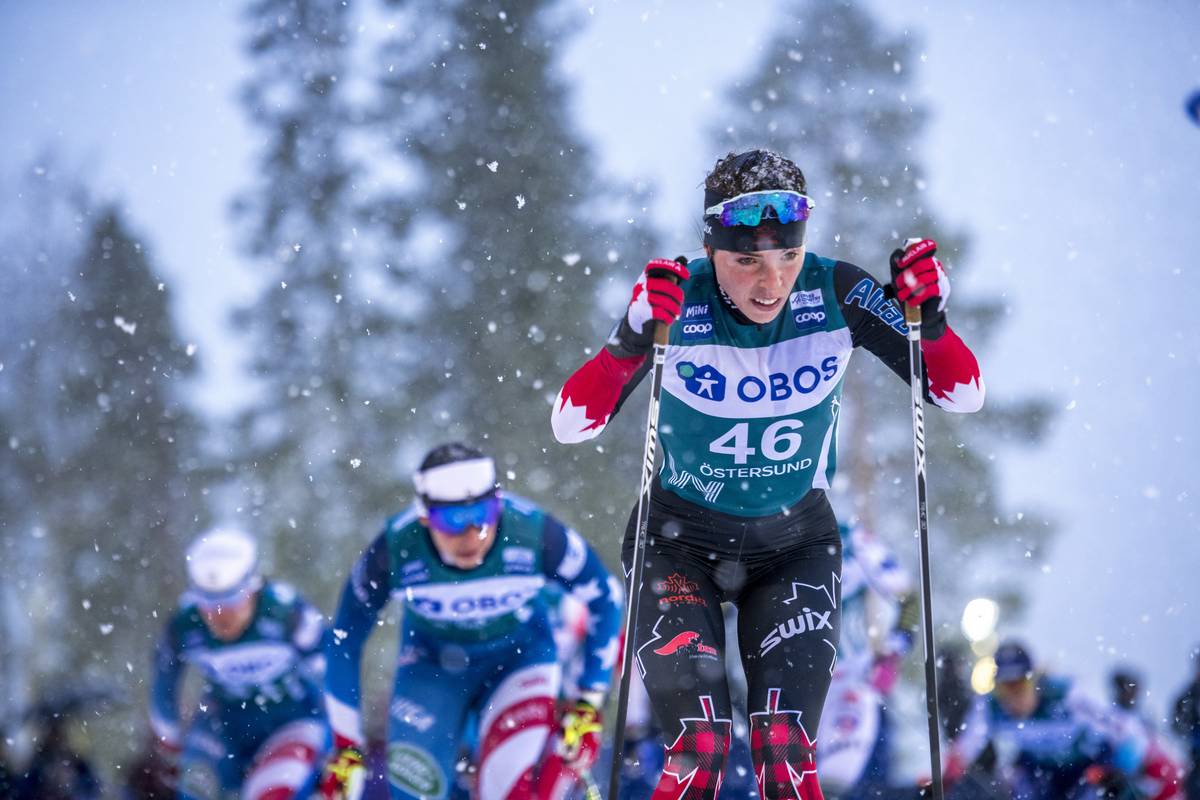
FasterSkier: You are 25 years old, and the brain becomes less “plastic” as we age. I mean it becomes more difficult to hard-wire new movements, new ways of using our body. Altering ski technique can be hard, especially for people who are already fast enough to be on the World Cup. Can you elaborate a bit more on how your were able to make those changes?
KSJ: I think that I got lucky by watching the video with my physio. She totally understood how to communicate, and how to best express to me how to change my movement patterns. And so much of it was her telling me to try this or try that as she motivated me to change my patterns. And if something didn’t click, then she found a new way to explain it.
It was also giving me physio exercises that I’ve repeated every single day until it stuck in my brain. It wasn’t easy and I think I get that. It probably does become harder to change body patterns when you get older, but at the same time, if you have the right resources and you’re also committed to continuing to find the right thing that works, then it’s totally possible.
As Erik said, he went to appointments and was able to communicate with my physio and talk about what he wanted to see on skis, we could look at video past and present and work from there. He could articulate what he wanted to be seeing. That benefitted me on the treadmill.
FasterSkier: One thing Devon Kershaw notices is your stronger double poling power and timing. Erik, What are you noticing about Katherine’s technique that is manifesting in the increased ski speed we are all seeing?
EB: When your back is slightly arched you are leaking power out there somewhere versus if your back and your core can resist the force going through your body and then we hope it will go into the ski and into the ground.
One of the things that is important to realize is that Katherine made 55% of the technique gains while I have been around, what I mean is that she made these gains last season, she had it already. But, we had done it in a very controlled format. We had done it without any strength, just movement patterns. And we had not tried to make these modifications when she was super fatigued.
But she had it already last season. We have had an entire year to just tweak small things. This is the first season where we have had time as she already skis 85% then 90% then 95% of what she really needs to do technically and can train with that over time. We eventually incorporated those technique changes when she has done speeds, skied in zone 5, zone 4, three hours, short duration, with or without poles, just poles, different terrain, everything.
And just establishing and having that base layer there for an entire year, I think that is what is coming out right now.
If you look at Katherine at least in her best races last year, it is not that hard to see she had made gains – but maybe it was still too fresh to shine through in the way we are seeing right now. And there is probably a bit more of her pulling back to old patterns last season when she was very fatigued towards the end of races.
So I think the biggest thing for her, that she is really establishing, is that now she knows her sustainable race pace while using her “rested” ideal technique. She can hold it almost when she is basically dying at the end of a race as well. That is a huge thing in technique.
People do a lot of technique fully rested – which is important, that is where you learn how to move, you can train as much as you want there. But if your technique collapses after 1 k in a 10 k, it doesn’t really matter how great you are in zone 1 or zone 2 or even zone 3.
Her double poling has been a huge focus because she felt that was where she was losing the most time. Even with her technique not being ideal back in the day, she still had the capacity to compensate. But in flatter terrain she could not keep up even it looked like she was almost sprinting.
She just did not have the tools or the speed and we were working a lot on that. We believed that she was strong enough and powerful enough and she could eventually find that timing and tempo where she does not have to be super fast all the time. Now we see that sometimes just putting in just big powerful pushes with the poles has been a huge piece for her to find that breakthrough in her double poling.
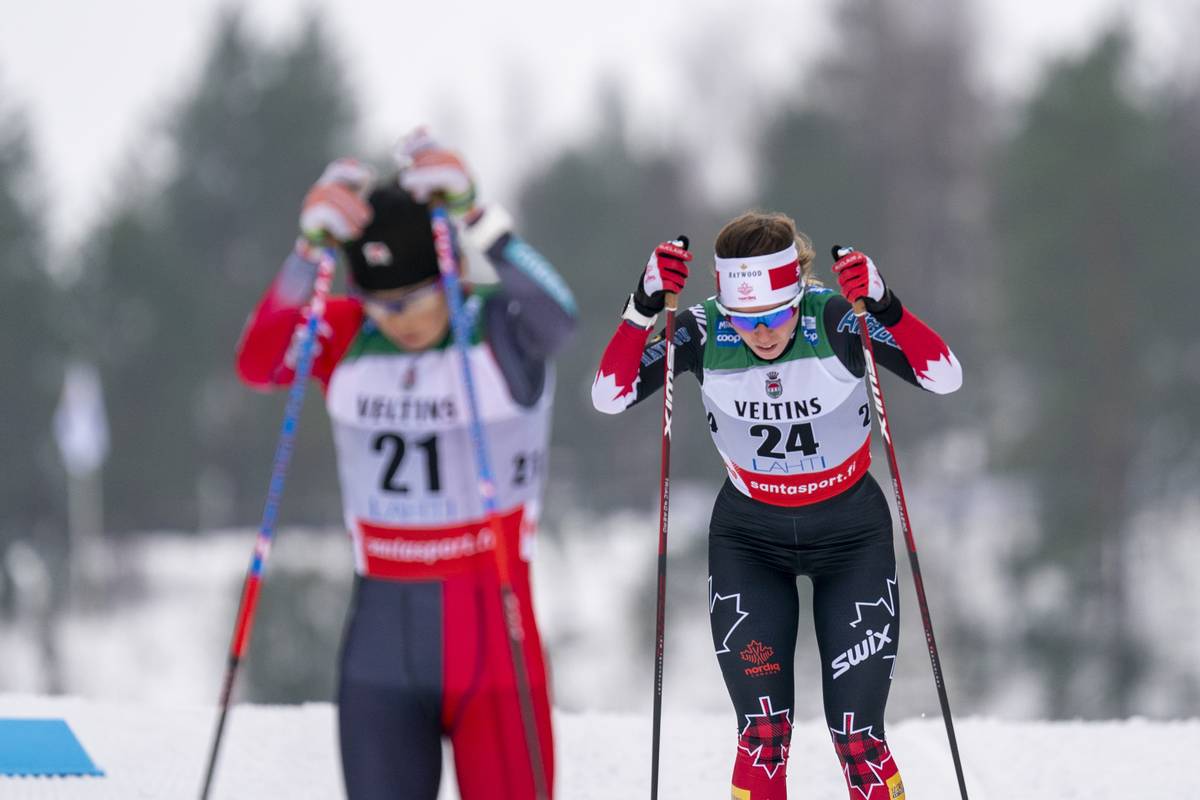
FasterSkier: Okay, Katherine, are you noticing all this when you are out skiing? Like in the moment, you are feeling that you are truly more powerful and technically sound?
KSJ: Yeah definitely. Last season, especially when I was classic racing and on the hills, I would have no problem keeping up. Well, not no problem, but I felt like that was not where I was losing time. But then, even when I was in a group, drafting on the flats, I felt like those were times when I could never keep up. And now I feel like I can relax so much more on those sections and that allows me to have a lot more energy for the climb.
If we look at something and a piece looks off, I might say, ‘oh well I’ve watched this video and it looks like maybe I could have my hands a little wider’ and I could try it and then he’ll be like, ‘how did that feel, better or worse?’
Then we can look at the video and see if it, in fact, looks better. It’s all about feedback from each other and that’s what really makes you better because I feel like so many people have told me in the past things like, ‘okay get your hips forward’. For me, that just doesn’t work because I can throw my hips forward and have no connection. It just doesn’t make my body any faster.
One thing I want to mention is that this is has been a two-way street. If, for some reason, you are in a situation with no back and forth communication, you are probably not going to get better. It is a lot about the athlete giving feedback to the coach. If we look at a video and we can both see what is wrong and talk about it, then it is all about figuring out how to fix it. And communicating and the way you express how you want to see changes is really important. And also, Erik has really encouraged me to go and try different things.
EB: We are in this project together. It is not a project where it is me telling her what ideal technique is and she trying to do what I am trying to tell her to do. It is very much a two-way street in communication and Katherine telling me this doesn’t work, I don’t understand that – I think this is extremely key. We have plenty of single pieces in this where Katherine might have been the leading person and I am just confirming or having input. And other things, I give a bit more guidance. This is a two-way street. She has been testing things out and we have been focusing on how does it feel and not what it looks like.
Let’s use the example of someone who needs to flex their ankle more. Well, ok that is what needs to happen, a bigger angle or lower angle in your ankle. But maybe for Katherine that feels like she needs to have a really aggressive knee drive. If your knee goes forward, then the ankle angle will also change. But it doesn’t feel like that for her, maybe it feels like something is driven from the knee for her. You have to approach it the same way she said her physio approached it – if you want to see some changes in her hips or something and I try to correct that with different feedback, in the knee, for example, and nothing happens, then we scratch that. Maybe we can think about her shoulders being in this position, trying different angles, try a different way of communicating. If it doesn’t change with that feedback, it is not the athlete’s fault. You gave the wrong feedback to that athlete.
But let’s be clear, I want to underline that Katherine’s progress is her own doing. I for sure think that my input set up the framework for a beneficial process, but this is mostly all her. She has taken cues, tried everything I have given her, she has come back with feedback on what worked and what did not. Like Devon said in the podcast a few days ago, without the athlete a coach is just a weird person yelling at the ski track and treadmill. So super flattered by all the kind words Devon said, that was the reason this interview came to life. But everyone should know that Katherine is the reason for her own success and I am super lucky to be coaching her.
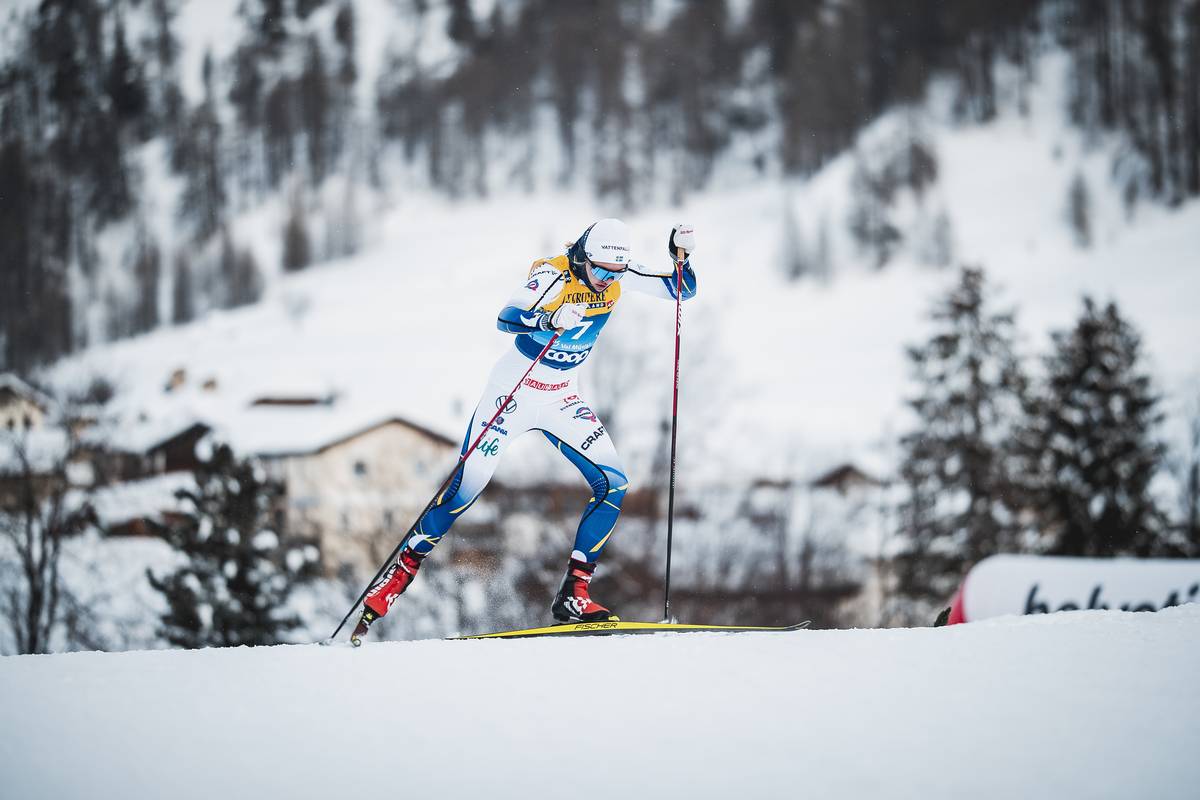
FasterSkier: Name one athlete who exemplifies a powerful and efficient technique?
KSJ: Linn Svahn
EB: I agree, Linn Svahn.
Jason Albert
Jason lives in Bend, Ore., and can often be seen chasing his two boys around town. He’s a self-proclaimed audio geek. That all started back in the early 1990s when he convinced a naive public radio editor he should report a story from Alaska’s, Ruth Gorge. Now, Jason’s common companion is his field-recording gear.

